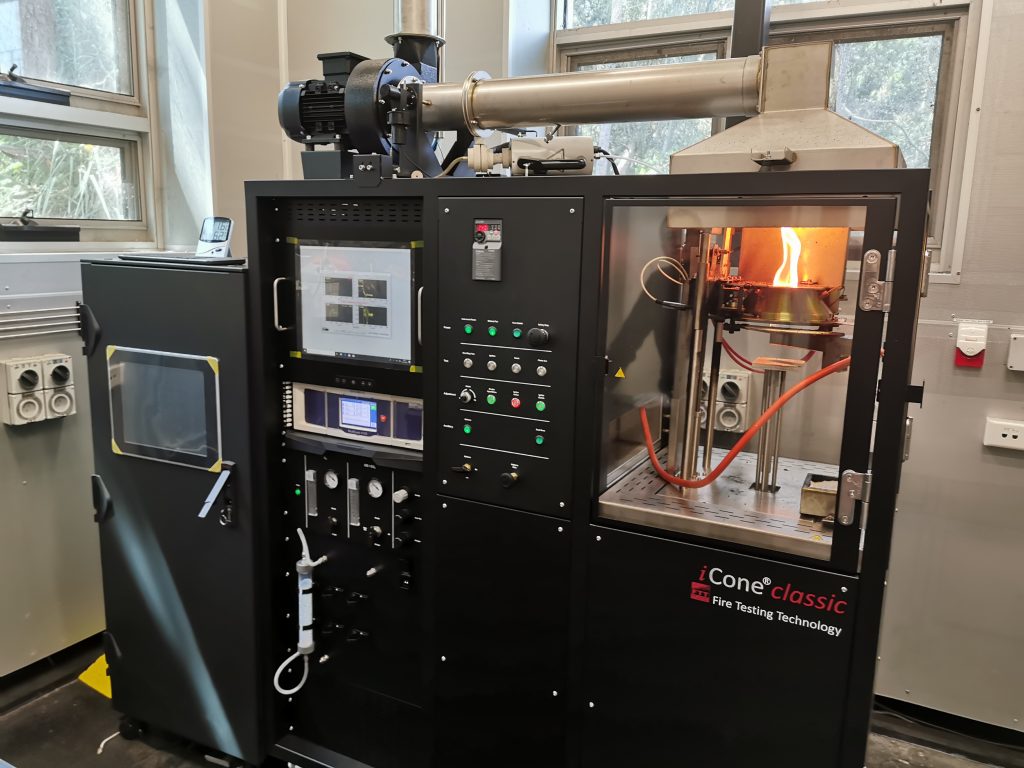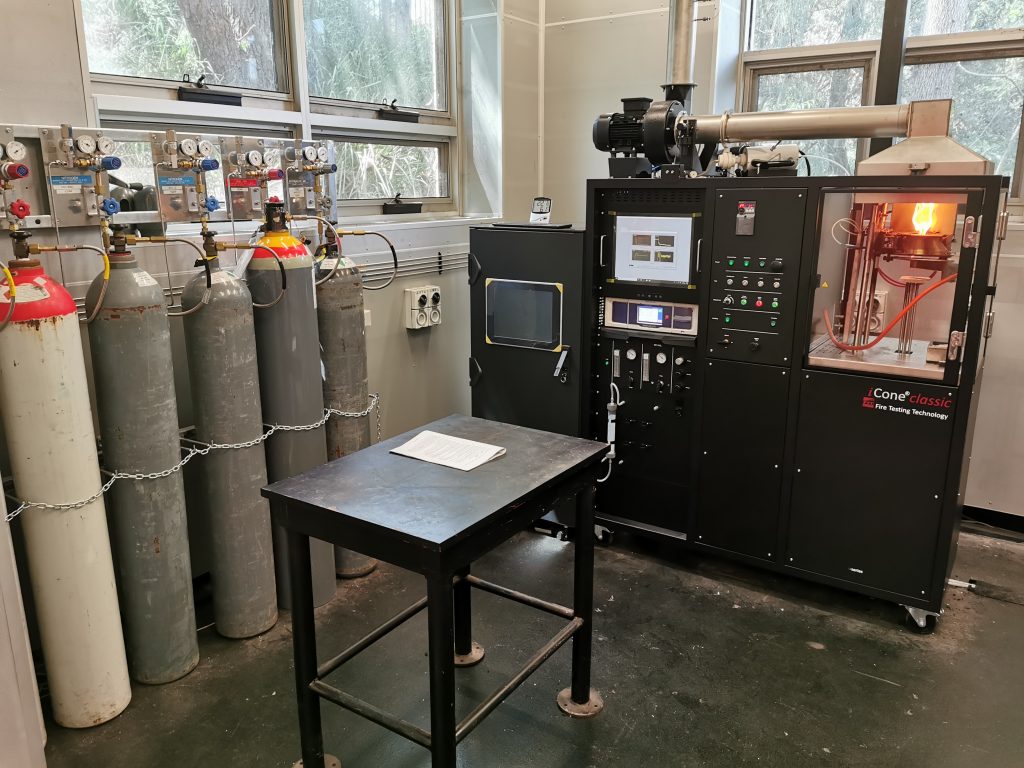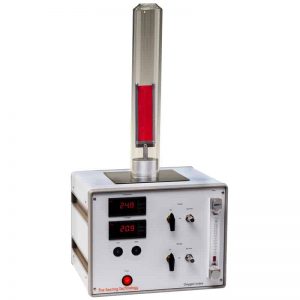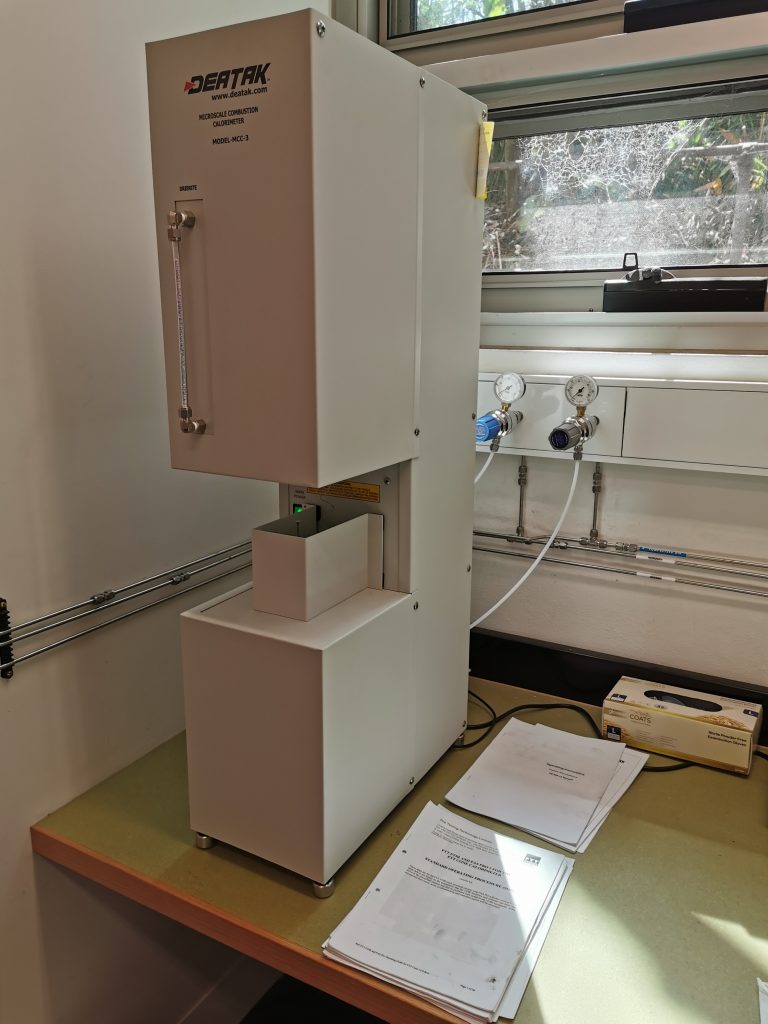Fire Safety and Material Science Laboratory
The Fire Safety and Material Science Laboratory located at K17, in Mechanical and Manufacturing Engineering at UNSW Australia allows students, academics and industry partners to solve real-world fire engineering challenges. The ARC Training Centre for Fire Retardant Materials and Safety Technologies aims to establish a world-leading fire testing methodologies for fire retardant materials (e.g. composite cladding panels, furniture materials, building and structure composites, etc). With its leading academics and some of the most advanced equipment available in any educational organisation, UNSW is helping to develop new capacities with multi-scale flammability asessments, measurement of fire effluents including gas toxicity, smoke density and particles.
Advanced Automatic Interactive Cone Calorimeter (with FTIR)
The iCone Calorimeter includes capability to analyse Oxygen, Carbon Dioxide and Carbon Monoxide, as well as an integrated FTIR subsystem for continuously measuring combustion gas. The system consists of (i) conical heater with a heat output of up to 100kW/m2, (ii) automatic spark plug ignition, (iii) temperature controller to allow the user to adjust the desired heat flux from the conical heater and also measure temperature profile during tests, (iv) load cell for mass measurements with accuracy of 0.01g, (v) exhaust system comprised of a hood, gas sampling ring probe, exhaust fan and orifice plate flow measurement, (vi) smoke obscuration measured with a laser system, (vii) pre-packaged data acquisition hardware and ConeCalc software for calibration, data collection, analysis and output.


The integrated FTIR subsystem allows an extended CEM application for other emissions including NO, NO2, N2O, HCl, HCN, HBr, unburned hydrocarbons and other toxic gases. FTT FTIR is an advanced FTIR gas analyser used for continuous gas monitoring in conjunction with iCone for online measurements of combustion gases in fire tests. The analysis of gases in fire effluents is very complex and challenging due to the great number of different organic and inorganic chemicals which representative atmospheres can contain. It is fully configurable to meet the requirements (including ISO 19702, ISO 9705 and EN 45545-2).
Thermalgravimetric Analyser
The Thermalgravimetric Analyser (TGA) is one of the bechmarking equipment for solid decomposition kinetics extraction for generic composite materials. We use the recent model of Netzsch TG 209 F3 Tarsus thermoanalyser instrument (Netzsch, Germany), which is capable of multiple heating rates up to 50 oC, and temperature range up to 1000 oC. It outputs the differential thermal analysis (DTA) from room temperature (21 oC) to 1000 oC in a nitrogen atmosphere under 10, 20, 35 K min-1 heating rates. The specimens were approximately 10 mg in mass and each test was performed twice-three times to ensure consistency of the data.

Vertical and Horizontal Flame Spread Test (UL94)
The FTT UL 94 tests for flammability of plastic materials giving a preliminary indication of their suitability for a particular application. The apparatus is supplied as a complete system incorporating all the features necessary for ease of use and safety. It conforms to all five UL 94 horizontal and vertical Bunsen burner tests and associated international standards, which are:
1. Horizontal Burning Test; UL 94HB (ASTM D 5048 or ISO 10351).
2. Vertical Burning Test; UL 94V-0, V-1, or V-2 (ASTM D 3801, IEC 707, or ISO 1210).
3. 500 w (125mm) Vertical Burning Test; 5VA or 5VB (ASTM D 4804 or ISO 9773).
4. Thin Material Vertical Burning Test; VTM-0, VTM-1, or VTM-2 (ASTM D 4804 or ISO 9773).
5. Horizontal Burning Foamed Material Test; HBF, HF-1, or HF-2 (ASTM D 4986 or ISO/DIS 9772.3).

Limited Oxygen Index
The FTT Oxygen Index (OI) measures the minimum percentage of oxygen in a test atmosphere that is required to marginally support combustion. The OI is an economical and precise quality control test of combustible materials. Its ease of use together with high levels of precision has made this technique a primary characterising and quality control tool to the plastic and electric cable industries and it has been specified by several military and transport groups.
The FTT apparatus enables the oxygen index to be determined in accordance with ASTM D 2863, ISO 4589 Part 2 or the UK Naval Engineering Standard NES 714.

Microscale Cone Calorimeter (MCC)
This new fire test instrument was designed by Dr. Richard Lyon and colleagues at the FAA. This instrument, standardized as ASTM D 7309, quickly and easily measures the combustibility or pyrolysis (aerobic or anaerobic) of materials, such as plastics, wood or textiles. Samples are only a few milligrams and results are obtained in minutes instead of hours or days.

